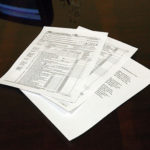A hardship discharge is available to debtors who are not current on their post petition support payments, even though such a delinquency would prevent a regular discharge.
I gathered this hitherto unknown bit from Henry Sommer in the panel on Marital Issues in Bankruptcy Saturday at the NACBA convention.
BAPCPA added to the prerequisites for a discharge a provision that the debtor must be current on post petition support payments. § 1328(a). Thanks to the prevailing economic conditions, I’ve had far more occasions to seek a hardship for clients in the past two years than in all my prior practice.
Part of the appeal of a hardship discharge now comes from BAPCPA’s elimination of Chapter 20. When it was possible to get a discharge in a Chapter 13 immediately following a Chapter 7, conversion often seemed equally beneficial to the client. Since 2005, I think harder about the choice. By electing a hardship discharge, my client can file another 13 two years from the commencement of the case that is cratering.
This becomes especially important when the Chapter 13 filing was driven by non dischargeable taxes. The taxes will survive the hardship discharge, but by getting the hardship discharge, the debtor can file another Chapter 13 when their situation improves and avail themselves of the automatic stay.
Not having to worry about post petition support delinquencies makes the process just that much easier. ‘Bout time something got easier.
Image courtesy of Wikipedia.








